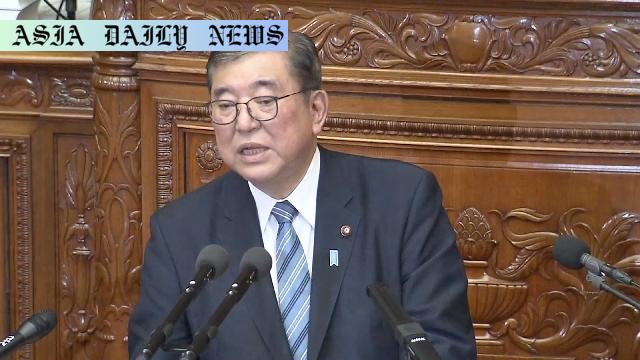Regional Revitalization: Ishiba outlines a national remodeling plan for Japan in the Reiwa era, focusing on vibrant local communities.

Introduction: A New Vision for Japan
Prime Minister Ishiba Shigeru recently delivered a passionate policy speech in Japan’s Diet, unveiling a comprehensive plan for national development. Titled a “plan for remodeling the Japanese archipelago in the Reiwa era,” Ishiba’s vision is deeply rooted in the concept of regional revitalization. He emphasized the importance of creating vibrant communities, enhancing local infrastructure, and transforming the economy to foster security and opportunity for all citizens. This multi-layered initiative strives not only to reshape Japan geographically but also to strengthen its social and economic structure.
Regional Revitalization as the Core
At the heart of Ishiba’s proposal lies regional revitalization, which focuses on engaging every corner of the country rather than just urban centers. He identified five principles to achieve this goal, with the creation of vibrant local communities being the cornerstone. These communities are envisioned as hubs that would attract youth and women—a demographic often overlooked in traditional planning—thereby addressing Japan’s aging and shrinking workforce. By transferring industries, universities, and even government offices to these regions, Ishiba aims to decentralize resources from major cities like Tokyo, empowering smaller cities and towns.
Building Infrastructure for a Modern Era
Another crucial aspect of Ishiba’s revitalization strategy is the development of infrastructure tailored to the demands of a new age. This includes building sustainable transport networks, leveraging renewable energy resources, and creating digital infrastructure that supports smart cities. These initiatives will improve the standard of living for local communities and make these regions more attractive for investment, residency, and cultural enrichment. It is a forward-looking strategy designed to future-proof Japan while embracing sustainability and innovation.
Economic Growth Through Wage Hikes
The Prime Minister also highlighted the pressing need for economic transformation. For years, Japan’s growth has been hampered by cost-cutting strategies. Ishiba’s vision shifts this paradigm to a model focused on creating added value by investing in human capital. Wage hikes are central to this approach, as they are expected to stimulate domestic consumption, reduce income disparity, and encourage workforce participation, particularly among women. By boosting wages and focusing on creating value over merely cutting costs, Ishiba aims to nurture a resilient, innovation-driven economy.
International Collaboration and Alliances
Ishiba’s vision extends beyond Japan’s borders. He expressed his intention to hold a summit with US President Donald Trump to discuss both economic and security issues, aiming to further fortify the Japan-US alliance. Additionally, he plans to foster open communication channels with China, especially between top leadership, to navigate geopolitical and trade challenges effectively. His diplomatic strategy underscores the importance of global cooperation in achieving Japan’s domestic goals.
Fostering Bipartisan Consensus
Running a minority government, Ishiba is acutely aware of the challenges in pushing policies through the Diet. Despite this, he called for bipartisan debate to achieve consensus on pivotal issues. He believes democracy thrives when diverse opinions are debated comprehensively, allowing for the creation of policies that genuinely reflect the people’s needs. To that end, he urged both ruling and opposition parties to engage in meaningful discussions beyond party lines, emphasizing accountability and transparency.
Conclusion: Toward a Balanced, Resilient Japan
Prime Minister Ishiba Shigeru’s policy speech was a rallying call for a balanced and resilient Japan, where everyone—from urban centers to remote villages—thrives. By strategically focusing on regional revitalization, infrastructure development, and economic reform, he envisions a future where Japan is well-prepared for the challenges of the 21st century. With international collaboration and bipartisan cooperation as key components, Ishiba’s multifaceted plan is both ambitious and necessary for Japan’s sustained growth and stability.
Commentary
Decentralizing for a Resilient Future
Prime Minister Ishiba Shigeru’s approach to regional revitalization marks a significant shift in how Japan envisions its future development. By focusing on rejuvenating local communities, Ishiba tackles two of Japan’s most pressing issues: rural depopulation and urban overconcentration. Transferring industries, academic institutions, and even government offices to these areas is a bold move that could redefine economic and social dynamics. However, effective implementation will require meticulous planning and sustained support from both local communities and national institutions.
Economic Transformation Through Wage Policy
Ishiba’s emphasis on wage hikes as part of his economic strategy is particularly noteworthy. In a country where stagnating wages have contributed to limited economic mobility, this shift has the potential to invigorate Japan’s workforce. Furthermore, by transitioning from cost-cutting models to value-creation strategies, Ishiba demonstrates a forward-thinking approach to sustaining economic growth while addressing wealth inequality. This policy has the potential to set a precedent for other nations grappling with similar challenges.
Bipartisan Cooperation: A Democratic Imperative
Perhaps the most compelling aspect of Ishiba’s vision is his commitment to fostering bipartisan consensus. In an era marked by political polarization around the world, Ishiba’s call for meaningful debate and collaboration across party lines is both refreshing and necessary. His acknowledgment that democracy thrives on inclusive policymaking is a lesson that extends far beyond Japan, serving as a timely reminder of the importance of dialogue and understanding in governance.
Final Thoughts
Prime Minister Ishiba’s policy speech reflects an ambitious yet pragmatic roadmap for Japan’s future. Regional revitalization, economic reform, and international collaboration are daunting but essential goals. With careful execution and a commitment to transparency, this vision could serve as a transformative blueprint not only for Japan but also for nations facing similar demographic and economic challenges.


